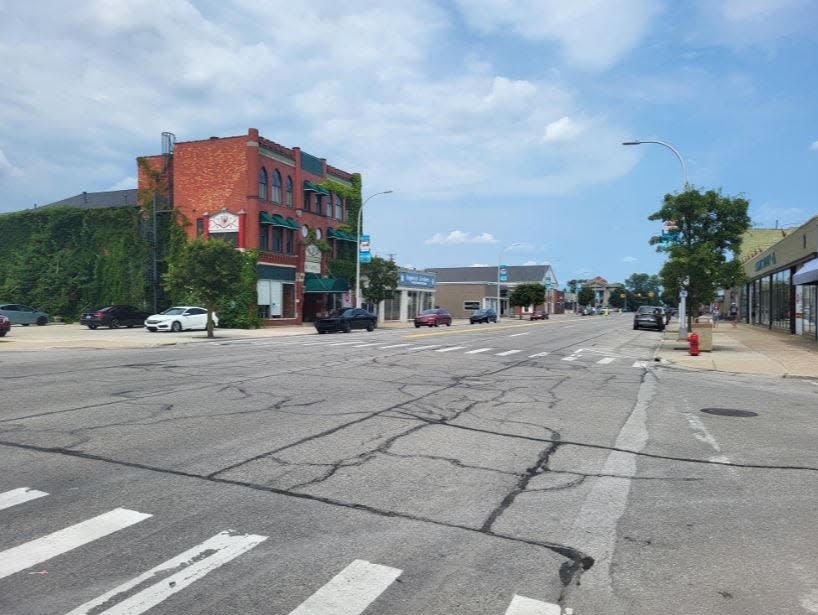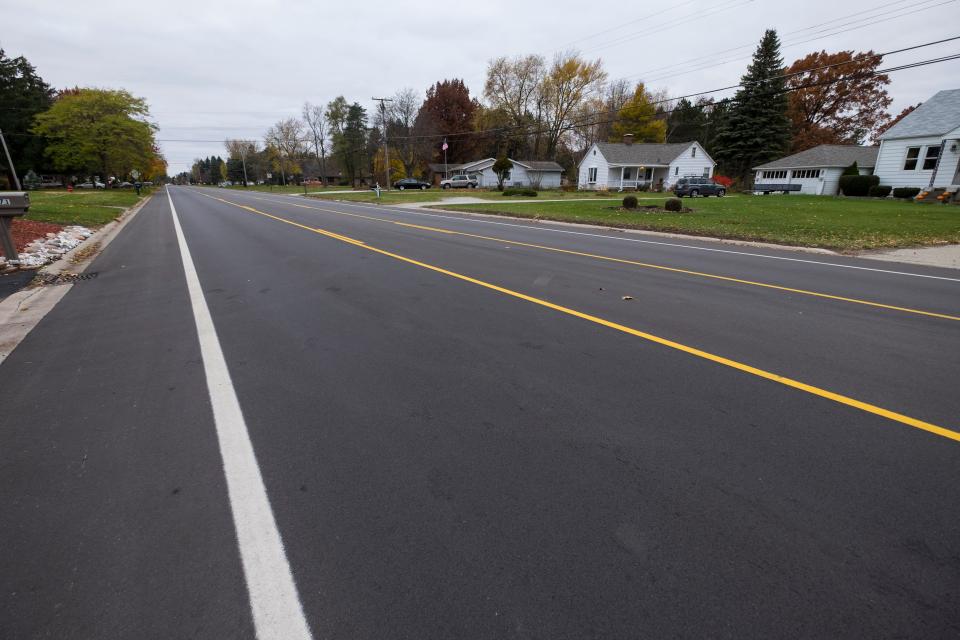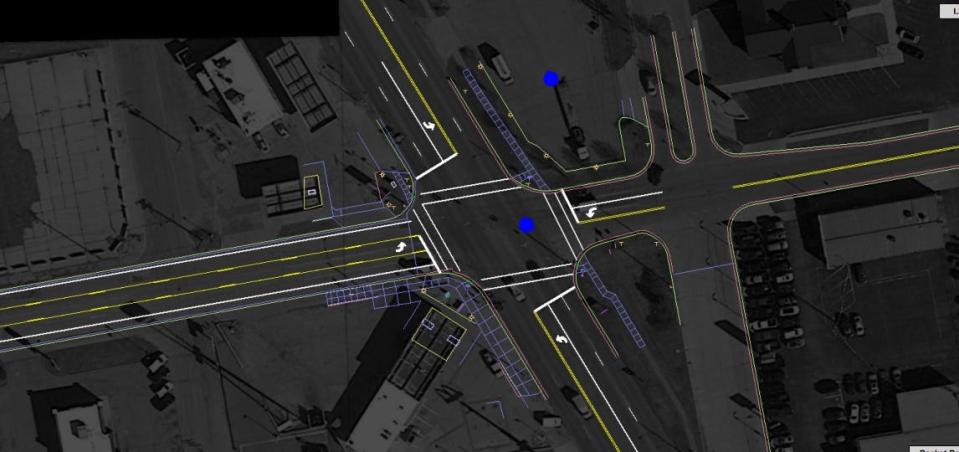When is Huron Avenue in downtown Port Huron slated for reconstruction?
Huron Avenue in downtown Port Huron is penciled in for a massive reconstruction in three years, according to a plan laid out by state officials this week.
But what the scope of that project will entail — or if it was a chance to reconfigure the four-lane roadway that’s often blamed in concerns with pedestrian safety — is still in the works.

That near-half a mile of Main Street roadway from Glenwood Avenue to the Black River is also a state throughway as part of the Interstate 94 business loop, and the anticipated project is currently in the survey process with the Michigan Department of Transportation.
Tom Anderson, the project’s manager for MDOT, gave Port Huron officials a brief rundown of their plans earlier this week. He said they hoped to get through engineering now and design work next winter before issuing bids in the fall of 2025 and commencing construction in 2026.
What will the I-94 loop redo look like?
Anderson told City Council members during a presentation last Monday that the project would:
Replace the pavement of Huron north until the roadway splits into Pine Grove Avenue
Address its curb and gutter, storm sewers, and traffic signals
Upgrade sidewalks at intersections to be ADA-compliant
Repair the Military Street Bridge over the Black River
Replace the city’s water main and sanitary sewer
Later this week, Brent Moore, the city’s engineering manager, said it’d be a similar project to the ongoing reconstruction of Griswold Street, where MDOT is spearheading the roadwork while the city replaces the underground infrastructure.
That means the city would cover the cost of any new water main and sewer.
Additionally, that version of the project also doesn’t address streetscape improvements that may be a priority for city officials.
However, amid surveying, no potential price tag was dropped this week, and a grant MDOT is pursuing may help widen the project’s scope.
“The current scope of the project does not include anything behind the curb, so replacing the sidewalk … redoing the landscaping, redoing the planter boxes, redoing the street lighting,” Anderson said Monday.
“We are going to apply for a TAP grant, which is a transportation alternatives program to pay for all that and get that all done,” the MDOT official said of federal funds. “It also allows to continue that streetscape through the entire project area.”

Is reconstruction a chance to introduce a road diet?
The short answer is probably not.
Road diet often involves reconfiguring the layout of lanes of a street and reducing the number of lanes. In the city of St. Clair, for example, North Riverside Avenue several years ago went from four lanes with two for travel in each direction to three with a center turn lane, and one lane each for north-and south-bound traffic.
Road diets are largely designed to slow traffic down or make space for bike lanes.
Periodically, since first introduced around St. Clair County, they’ve entered the lexicon among residents concerned about walkability and pedestrian safety in Port Huron’s downtown.
In response at a meeting earlier this year, City Manager James Freed said a similar effort likely wouldn’t work on the Main Street.
He reiterated the point when asked on Thursday, “The traffic, the bridge, it won’t work, and it’s been studied numerous times. And it’s MDOT’s road. I wanted to see a road diet until I saw the study and saw what it would mean for bridge stacking when the bridge is backed up. It would gridlock the entire downtown. Not every road can be just a one-lane road.”
MDOT has introduced a road diet elsewhere in Port Huron.

In an email this week, MDOT regional spokesperson Jocelyn Garza also said, "All of those design items haven’t been completely finalized, but it doesn’t appear to be a feasible option for this portion of the road. If there is an option to change the configuration without creating congestion, we will have to address it with the city first."
However, she added, "We will still be studying the corridor as part of the project, but based on previous reviews it doesn’t look like there is a chance we can make that would be successful."
MDOT to meet with DDA: What comes next?
Anderson said the TAP grant application is coming this fall. And as part of the planning process — and to involve the public — he said they’re planning to attend the city’s Downtown Development Authority meeting in August.
A DDA meeting wasn’t yet listed for next month on the city’s online calendar, though they typically are at 8:30 a.m. the third Tuesday in a month in the Municipal Office Center’s fourth-floor conference room.
As with the Griswold project, Moore said the downtown project would also likely require other City Council approvals in support.
On Monday, Councilman Conrad Haremza asked Anderson if the 2026 scheduling for construction would impact the city’s most “busy week in July,” referring to Boat Week and the festivities leading up to the Port Huron-to-Mackinac Island Sailboat Race.
“It’s a big project. There’s a lot to do. Our goal is not to affect Boat Week during July. I know it’s a big deal for you guys, and we wouldn’t want to do anything that would impact that,” Anderson said. “So, either we’ll start it early in February or March or start it (the) day after you’re done.”
Contact Jackie Smith at (810) 989-6270 or jssmith@gannett.com. Follow her on Twitter @Jackie20Smith.
This article originally appeared on Port Huron Times Herald: When is Huron Avenue in downtown Port Huron slated for reconstruction?
